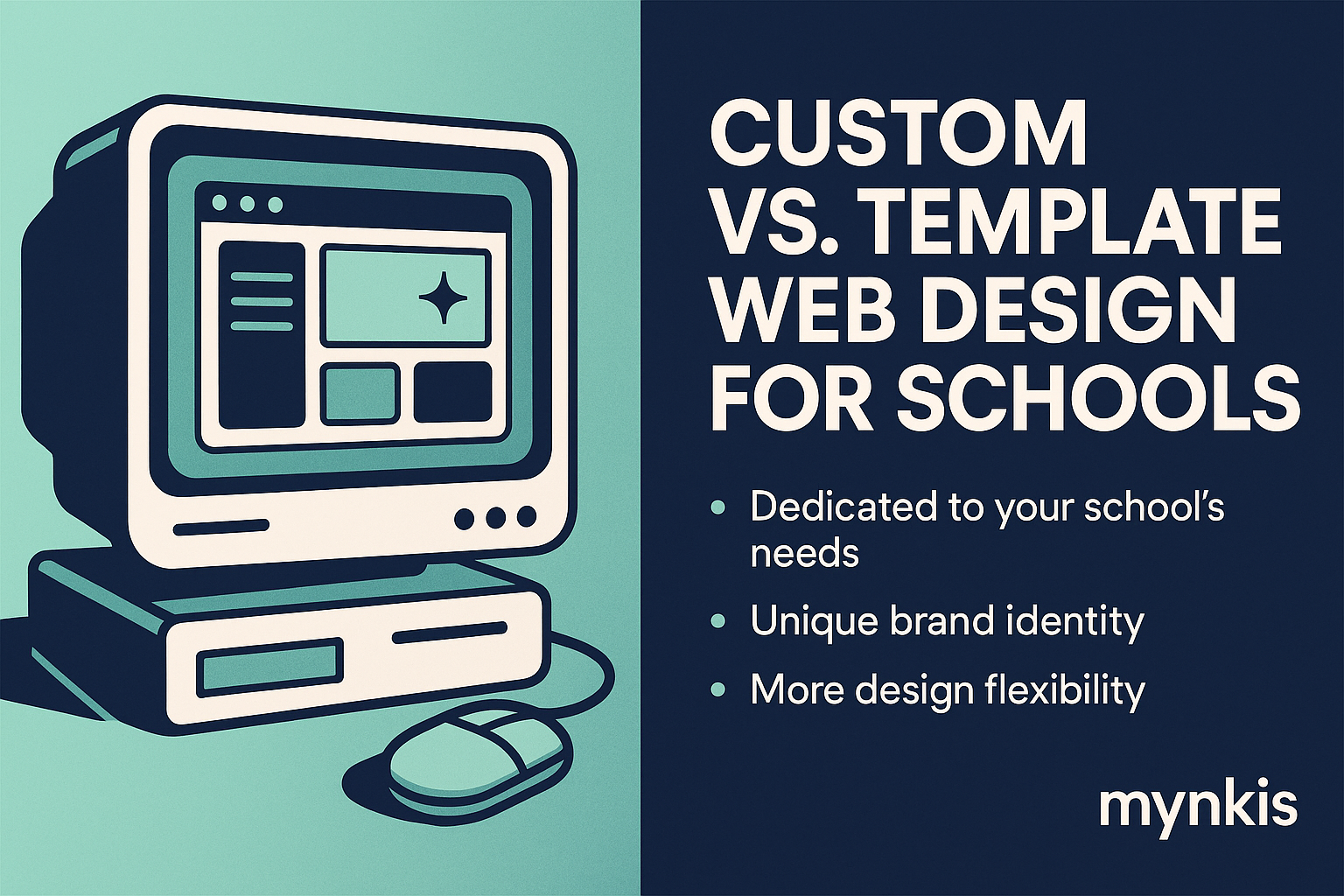Schedule a Demo
In my work with educational administrators, I've observed that schools and universities face unique challenges in their digital representation. Every click, every interaction, shapes the public perception of the institution's offerings, values, and commitment to learning. When it comes to constructing or revamping a website for these purposes, the debate often circles back to a pivotal question: should you choose a custom-designed website or opt for readily available templates?
Templates offer a quick path to an online presence. They're pre-designed, easily modifiable frameworks that allow educational institutions to get their site up and running swiftly. In my dealings with clients on tight budgets, I've seen the allure of reducing costs and design time through the use of enterprise web solutions like pre-built templates. Several organizations stand by this method, citing ease of use and the reduced technical burden as significant benefits.
Yet, templates come with their constraints. Their one-size-fits-all nature often leads to a homogenized aesthetic that struggles to differentiate one educational institution from another. C-level executives at schools have voiced concerns to me about lacking the unique branding that a custom site can deliver. Moreover, most template-based custom software development options lack the flexibility to integrate institution-specific functionalities that are vital for enhancing the student and faculty experience.
Custom enterprise web solutions, designed from the ground up, provide a level of personalization and functionality that templates simply can't match. In personalized discussions with university provosts, they expressed delight at the possibility of creating interactive learning portals and integrating bespoke tools tailored for their academic environment. This bespoke approach guarantees an adaptable and forward-thinking platform, prepared to evolve alongside educational trends and technological advances.
When weighing custom against templated solutions, consider the comprehensive cost-benefit analysis. Although initial investments into custom software development are steeper, business analysts and school financial officers I've partnered with praise the long-term value of a custom site. They contend that a well-engineered custom solution ultimately fosters enhanced student engagement and could potentially boost alumni and donor relations, reinforcing financial returns over time.
Let's talk SEO, a factor top-of-mind for every digital strategist. Educational institutions wanting to optimize for search traffic have to consider how their choice of website design impacts SEO outcomes. An independent search engine specialist once shared with me that templates often come with pre-loaded content and structures that may conflict with your unique SEO goals. Custom web design allows a school the opportunity to build SEO in from scratch, tailoring the site's structure to target specific keywords related to their educational offerings.
For educational institutions, functionality defines the success of a website. A tailored learning management system (LMS), integrated to match the unique curriculum of the school, can be the difference between a decent and a premier learning experience. I've helped design features that enabled seamless communications, coursework submissions, and progress tracking, fostering an environment conducive to both learning and administrative efficiency.
Branding is more than a logo; it's the feeling you project. A visitor's journey through a school's website can enchant them or leave them indifferent. Customization excels in this regard, enabling brand consistency across all digital touchpoints. Without custom design, template solutions could juxtapose their predefined elements awkwardly with an institution's identity, diluting the essence of the school's brand.
Educational platforms grow and evolve; they require design solutions capable of scaling alongside them. In deploying custom websites for clients, I've seen firsthand how easily adaptable custom designs are to add new features, like online application systems or expanded course offerings, with minimal disruption to existing architecture.
The user experience is where I believe custom solutions truly shine. Every custom site I've designed aims to respond intuitively to user behavior and anticipate needs. Templates often fall short in replicating this tailored approach to UX, which can directly impact student satisfaction and engagement rates, a measure institutions can't afford to ignore.
Custom solutions afford higher levels of control over data privacy and security. When building bespoke websites, I employ stringent security protocols to safeguard sensitive student and faculty data. Relying on a third-party template can leave your institution at the mercy of the provider's security update schedule, a situation to manage with great caution.
So, where does that leave schools and universities in making a decision? I often suggest implementing a detailed comparison, listing out must-have features next to both custom and template options. Delving into this juxtaposition with top technology leaders can unearth insights—whether from the Tech & Learning Association or insights from Educause—that lead institutions to make an informed choice.
After considering the unique needs of your institution, the role of your website within the school ecosystem becomes apparent. Custom development opens avenues for highly personalized learning experiences and branding yet requires an in-depth strategic commitment to invest effectively. On the other hand, templates might suit institutions facing budget constraints or time crunches, understanding the trade-offs of personalization and SEO in the process.
The vision of educational institutions to enrich academic experiences should align seamlessly with their digital strategy. Every step toward achieving an engaging and intuitive online environment underscores your institution's dedication to education's future. As you deliberate the possibilities of custom software development and the simplicity of templates, bear in mind the journey to digital excellence requires patience, clarity of purpose, and sometimes, an investment in the bold rather than the convenient.
Based on available research, individual results may vary; professional consultation might be necessary to customize solutions to your specific institution's needs and circumstances.
